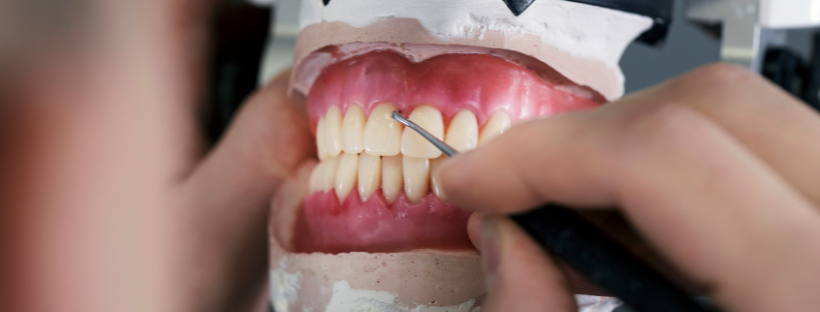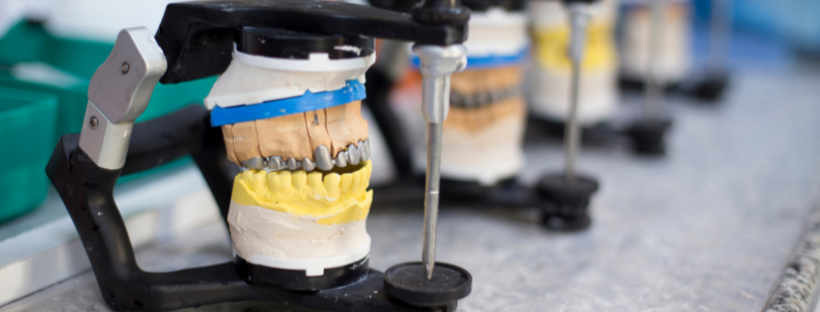Occlusion is all about how our teeth fit together when we close our mouth. It’s not just about how teeth look but also how they work together when we chew and speak. If teeth don’t fit together right, it can cause problems with our jaws and lead to pain. In this article, we will discuss some important terms related to occlusion, such as “centric relation”, “canine guidance”, and more. We will also shed light on jaw problems, often called TMD, and how they might be related to the way our teeth come together. It’s important for dental professionals to check and balance occlusion. It is also important for dentists to educate patients about occlusion to prevent occlusal issues that may arise due to bruxism and other such habits.
In the field of dentistry, the concept of ‘Occlusion’ encompasses more than just the positioning of teeth; it embodies a harmonious blend of anatomical, functional, and aesthetic elements that collectively influence overall oral well-being. . The realm of occlusion explores a complex system that involves the teeth, jaws, muscles, and habits. Occlusion governs the alignment and interaction between the upper and lower sets of teeth. An improper occlusion not only impacts aesthetics but also functionality, leading to a cascade of complications such as temporomandibular disorders.
This article aims to simplify the complexities of occlusion, highlighting important concepts that have a direct impact on occlusion. Beyond merely defining terms and concepts, the article explores the intricate relationship between occlusion and factors such as temporomandibular disorders (TMDs), centric relation, maximum intercuspation, and canine guidance. Delving into both research findings and clinical practices, this article emphasises the role of professional assessment and patient education in identifying and preventing occlusal problems.
Occlusion Simplified
The human jaw, comprising mostly 32 teeth in adults, is designed for both aesthetics and function. Occlusion refers to the way these teeth come into contact, especially when the mouth is closed.
From infancy, occlusion undergoes changes. Primary teeth give way to permanent teeth, which then may shift their position in the mouth due to various individual factors over time. Age, diet, oral habits, and even evolutionary factors have sculpted the human occlusion we see today.
Important Terminologies for Understanding Occlusion
When we talk about occlusion, there are some key terms that can help us understand the topic better. Think of it like learning the basic rules before playing a game. Before we dive deeper into how occlusion and why it matters, let’s get familiar with some of these important terms related to occlusion.


Centric Relation
There are many definitions circulating about centric relation. In simple terms, centric relation (or centric relationship) refers to the optimal jaw position where the head of the mandible is in its most superior position within the glenoid fossa (the socket in the temporal bone of the skull). In this position, the condyles (the rounded ends of the mandible) are aligned in the most stable and reproducible position.
Centric relation is a consistent and reproducible reference point that has been well-established for use in diagnostic and restorative dental practices, with strong scientific backing. Various widely recognised techniques exist to replicate this intermaxillary position. However, there is a lack of definitive scientific evidence to pinpoint the precise location of the condyle in relation to the fossa. Intraoral gothic arch tracing has proven to be a reliable method of determining the centric relation.
Centric relation is useful for various dental procedures, especially in restorative dentistry and orthodontics. The centric relation is used as a starting point for the diagnosis and treatment of occlusal problems and the fabrication of dental prosthetics like crowns, bridges, and complete dentures. For example, when designing crowns or bridges, the dentist must ensure that the fabricated teeth will articulate with the patient’s bite harmoniously. Centric relation offers a stable and repeatable reference point that ensures the prosthetics are fabricated to align perfectly with the natural occlusion, preventing undue stress or wear.
The significance of centric relation lies in its stability and consistency. Since it is a bone-to-bone relation, it does not change over time and is not influenced by factors like tooth position or muscle function. Therefore, it’s a valuable tool for dental professionals to achieve a harmonious and balanced occlusion, leading to improved function and longevity of dental restorations and natural dentition.
Advance your career by studying for a world-leading postgraduate diploma
Study at the cutting-edge of dental research with curricula taught by global experts and an online schedule that suits you.
Maximum Intercuspation
Maximum intercuspation (MI), also known as centric occlusion, refers to the position of the jaws where the cusps of the teeth in one jaw fit into the corresponding recesses in the opposite jaw.
In maximum intercuspation, the upper and lower teeth interlock in a way that allows for effective chewing and grinding of food. This position also provides stability to the dental arches, distributing forces evenly across the teeth during chewing.
Maximum intercuspation is crucial in dental health for several reasons. Firstly, it represents the position commonly used for chewing, thereby playing an essential role in daily function. Secondly, proper intercuspation ensures that biting forces are evenly distributed across the teeth, minimising the risk of localised wear or damage. Finally, an optimal maximum intercuspation contributes to a comfortable bite. Without it, interferences or misalignments could lead to jaw discomfort. Together, these aspects underline the significance of maximum intercuspation in maintaining both the functionality and health of the dental system.
Centric relation and maximum intercuspation represent distinct concepts in dentistry. Centric relation is a jaw position that defines the relationship between the mandible and the skull, existing as a stable and reproducible bone-to-bone connection independent of the teeth. On the other hand, maximum intercuspation refers to the optimal alignment and contact between the upper and lower teeth, reflecting a tooth-to-tooth relationship. While centric relation serves as a consistent reference for dental restorations and diagnosis, independent of the individual’s dental condition, maximum intercuspation emphasises the functional interaction of the teeth, integral to daily activities such as chewing and speaking.
Canine Guidance
Canine guidance is a concept of occlusion that refers to the way the upper and lower canine teeth interact and guide the rest of the teeth during lateral jaw movements. When a person moves their jaw to the side, the upper and lower canines come into contact with each other, guiding the movement and preventing other teeth from touching.
The guidance offered by the canines serves several important purposes. By taking the brunt of the force during these movements, the canines protect other teeth, especially the posterior ones, from excessive wear and tear. The protection also ensures that the back teeth do not interfere with each other, thus preventing potential trauma or stresses that could lead to issues like tooth fractures or temporomandibular joint disorders (TMDs).
The guidance provided by the canines enhances the efficiency and control of lateral chewing movements, aiding the quality and efficiency of chewing. The unique shape of the canines is designed to withstand these forces. Their unique shape helps in preserving the appearance and structure of the other teeth. Additionally, by guiding the jaw movement, canine guidance aids in preventing unnecessary strain on the jaw muscles, contributing to the overall harmony of the masticatory system.


Are TMDs A Result of Imbalanced Occlusion?
Temporomandibular disorders (TMDs) encompass over 30 different conditions, most of which lead to pain and problems in the jaw joint and the muscles responsible for controlling jaw movement. These disorders may affect up to 15% of adults, and they have a peak incidence at 20 to 40 years of age. A frequent type of Temporomandibular Disorder is known as internal derangement. This occurs when the disc inside the jaw joint is displaced, often due to a lack of stability among the parts of the joint, including the condyle, temporal bone, and articular disc. Anterior disc displacement is more common than posterior, medial and lateral displacements.
The relationship between temporomandibular disorders (TMDs) and occlusion is multidimensional, involving a delicate interplay of factors. Improper occlusion, or malocclusion, may contribute to Temporomandibular Disorders by causing an imbalance in jaw forces. Malocclusion leads to stress on the Temporomandibular Joint. However, Temporomandibular disorders typically have a multifactorial aetiology. These aetiological factors include aspects like trauma, psychological stress, and systemic conditions. Thus, attributing TMD solely to occlusal problems can be an oversimplification.
The results consistently show that there’s generally no significant link between TMD and dental occlusion. Out of nearly 40 features of occlusion studied, only two (specifically, centric relation-maximum intercuspation slide and mediotrusive interferences) were found to be associated with TMD in most of the single variable analyses conducted on patient populations.
Some TMD symptoms might be associated with occlusal disharmony, careful examination and consideration of other underlying causes are essential for diagnosis. Treatment may sometimes include addressing occlusal problems to alleviate TMD symptoms, but this approach should be used with caution as not all TMDs are caused by or respond to changes in occlusion.
Conclusion
The understanding and interpretation of occlusion reveal a multifaceted and intricate landscape. This is especially true in its complex relationship with Temporomandibular Disorders (TMDs) and factors such as centric relation, maximum intercuspation, and canine guidance. Research and analysis predominantly point to a lack of a clinically relevant association between TMD and dental occlusion. Only specific features such centric relation, maximum intercuspation, and mediotrusive interferences show any connection with TMDs.
Professional assessment remains crucial in identifying the exact nature of occlusal problems such as internal derangements and disc displacements. Educating patients about their occlusal condition, the importance of canine guidance, and how parafunctional habits may affect them can be vital in early intervention and preventive measures. Together, assessment and education create a comprehensive approach to managing and mitigating occlusal problems, promoting overall dental well-being.
Clinicians are encouraged to move away from traditional paradigms and acknowledge the complexities in occlusal interpretations. The evidence supports a more nuanced approach that recognises the individualised nature of occlusal problems and TMDs. In conclusion, the intricate dynamics of occlusion require a robust understanding, accurate assessment, and a comprehensive approach to patient education.
Sign up to unlock more dentistry resources
Enrol now to on one of our postgraduate level diploma programmes to enhance your skills, access exclusive resources, join our global community, and more.
Elevate Your Understanding of Occlusion with Us
Unlock the mysteries of dental occlusion and its vast implications on oral health. Dive deep into the nitty gritty of topics like centric relation, canine guidance, and the multifaceted relationship between TMDs and occlusion with our advanced Postgraduate Diploma course at the London Dental Institute. If you’re hungry for some quick knowledge, have a look at our blog on our website.
We pride ourselves on merging scientific theory with practical experience, providing you with a holistic understanding of the topic. Whether you’re a budding dental practitioner or a seasoned professional looking to refresh your knowledge, our program offers a detailed exploration of occlusion’s complexities. We believe that a robust understanding of these foundations will empower you to provide superior patient care, making a real difference in their lives.
By enrolling in our comprehensive course, you’re not just investing in education; you’re laying the foundation for a brighter, more informed future in dentistry. And with the mentorship of industry-leading experts, hands-on training sessions, and a community of passionate professionals, you’ll be well-equipped to tackle any occlusal challenge that comes your way.
Don’t just learn. Thrive. Enroll in our advanced dental occlusion course today and become a beacon of expertise in the world of dentistry. Your journey to mastering the art and science of occlusion starts here.



